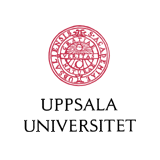|
Key Issues in Radio Interface Design
Summary of a Project within PCC
Mikael Sternad et. al.
The first annual
PCC Workshop, Upplands Väsby, Nov. 2-3 1998.
-
Outline:
-
The strategic research program
PCC
organizes and supports research and graduate education
within mobile communications and data communication
at several main Swedish universities.
Graduate projects ("work packages") are organized and coordinated
into projects. The present paper is an overview over one of these
projects, "Key Issues in Radio Interface Design", presented at the
first annual
PCC Workshop, in November 1998.
-
Extended Abstract:
-
This project aims at investigating key issues in radio interface design
for practical frequency-selective fading channels.
It is focused on the
new opportunities and challenges that arise when considering
broadband radio systems, with an emphasis on packet data
transmission.
The purpose of such a radio interface is to carry packets to or
from wireless users. The destination of packets may be one
single user but especially in the downlink it may also be several
users (broadcasting). The most important aspects related to the
radio interface are
- high spectrum efficiency (as high number of
bps/Hz as possible),
- high power efficiency (low transmitter
power is important at least in wireless terminals),
- low delay (some packets are likely to have a maximum
transmission delay of 10 ms),
- low complexity of
algorithms (again, especially in wireless terminals) and
- adaptivity, for different requirements and channel conditions.
Some of the particular issues we investigate are:
- Efficient codes for data transmission (Turbo codes),
- new ways of optimizing the downlink transmission in
CDMA systems,
-
synchronization at low SNR's,
- channel modelling for improved antenna array receivers,
-
multiuser detectors for CDMA and array
receivers and
-
adaptive methods for modulation,
coding and protocols in packet radio systems.
Our aim is to master these key issues, and thereby provide
input to a discussion of possible future system designs
which we expect to emerge within PCC in the coming years.
Our input takes the form of both possibilities and constraints.
Possibilities, in the form of novel transmission schemes,
receiver algorithms and novel ways of modelling and understanding
the radio interface. Constraints, in the form of limits of performance
in various situations.
There are presently seven workpackages (WP's) within this
project. Their purpose, motivation and present status are outlined
briefly below.
The project has been running since 1997, with
Uppsala University joining in 1998.
Thus, much of the work is still at a preliminary stage,
and the results presented at the PCC conference describe our pilot studies
and initial research results.
To coordinate the project as a whole, we held a kickoff meeting
in November 1997 and
organized a
workshop
on April 7-8 1998.
This workshop was organized jointly with
participants in the NUTEK Telecommunications program.
Several main advisors and researchers
have been active in helping and supporting
the work of all the graduate students, in a process of cross-reviewing
the work packages. A joint graduate course on Digital Communications
was held by Arne Svensson (CTH),
Göran Lindell (LTH) and Tommy Öberg (UU).
Source:
Pdf, 38K.
|
Related research: Later Wireless IP project
|
Main
entry in list of publications
|
|

